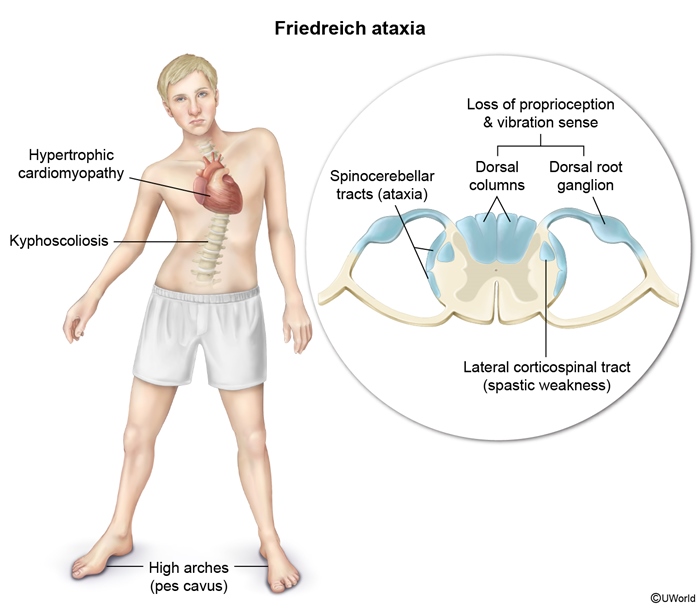Friedreich Ataxia
Article Sections
Introduction
Friedreich ataxia (FA) is an autosomal recessive neurodegenerative disorder characterized by progressive neurologic dysfunction, cardiomyopathy, and diabetes mellitus.
Pathophysiology
FA is caused by a trinucleotide repeat expansion (mostly common GAA) in the frataxin gene on chromosome 9. This expansion translates into a reduced amount of frataxin protein. While the exact pathophysiology is unknown, the decrease in frataxin likely disrupts cellular iron homeostasis, leading to iron accumulation in mitochondria. This leads to oxidative stress and mitochondrial dysfunction. Frataxin is highly expressed in the nervous system, heart, and pancreas, so these are typically affected in patients with FA.
Pathology
Macroscopically, patients with FA have atrophy of the dorsal nerve roots, the posterior columns in the spinal cords, and in the medulla (where fibers for the posterior columns and spinocerebellar fibers travel). Microscopically, there is widespread neuronal loss of sensory nerve fibers.
Continue Learning with UWorld
Get the full Friedreich Ataxia article plus rich visuals, real-world cases, and in-depth insights from medical experts, all available through the UWorld Medical Library.
Figures
